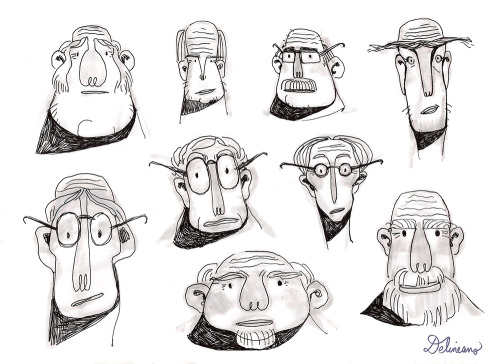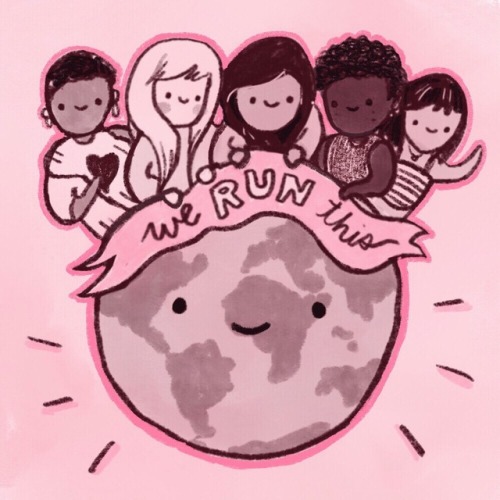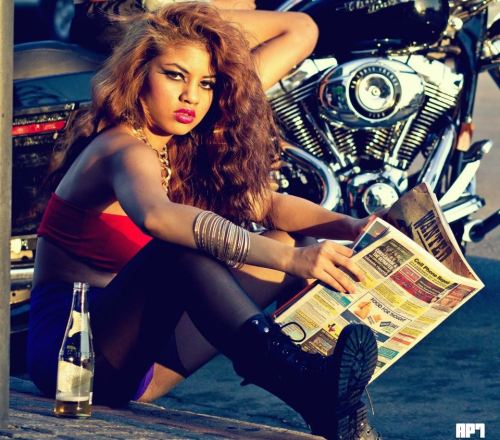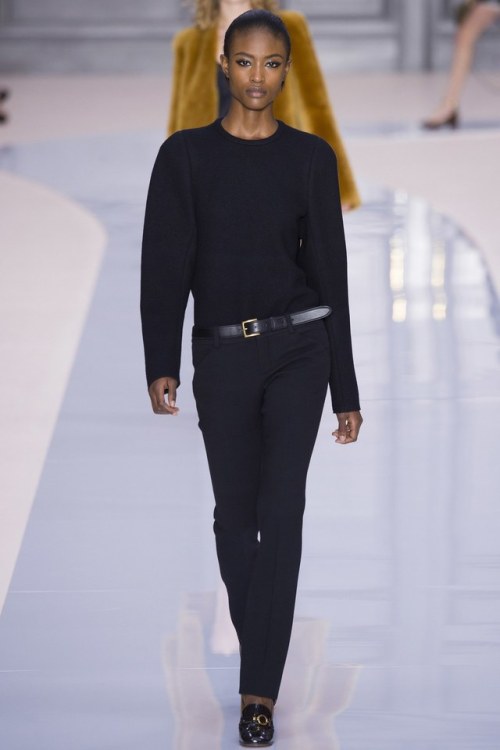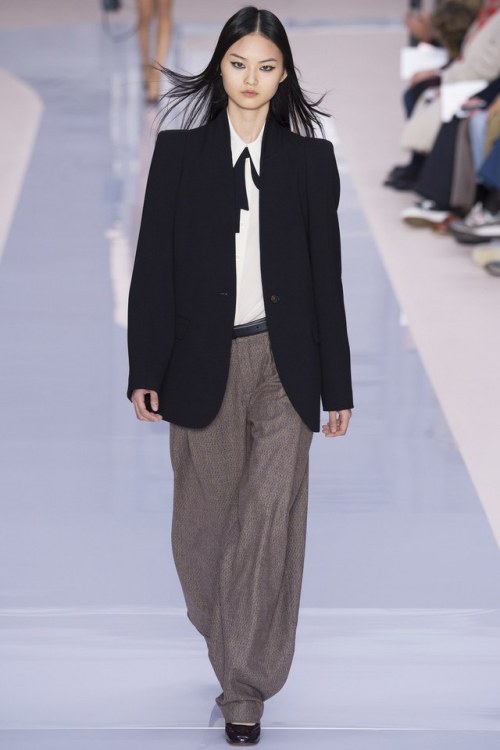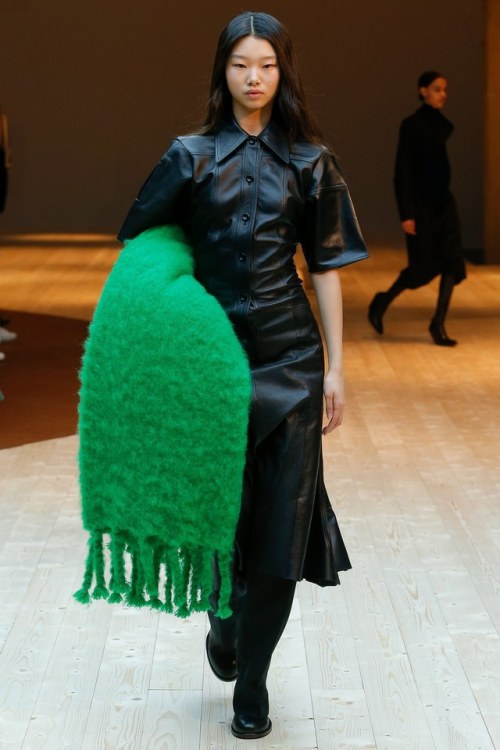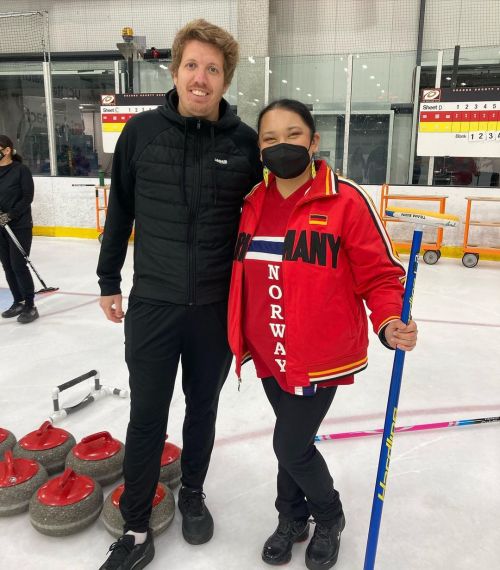#diversity
Voting ends today 3-1-2022 at 3pm ET in the Spoonflower International Women’s Day Wall Hangings Design Challenge:
https://www.spoonflower.com/contest_voters_temp/new?contest_id=636
my entry: ladies in rainbowYou don’t have to have a Spoonflower account to vote, but, it’s gonna ask you to enter a captcha.
Post link
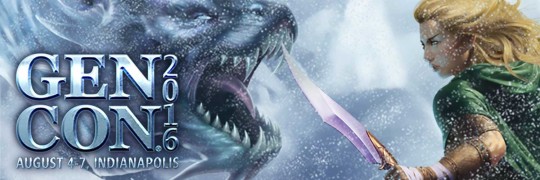
Sorry I’ve been not posting much for the past few weeks–they’ve been busy.
But! The slate of Industry Insiders for this year’s Gen Con just went live, and I want to talk about it, because I think it marks a big step forward for tabletop gaming.
Of the 25 Insiders, 13 (52%) are female.
I don’t think I can emphasize enough how big of a deal this is. Gen Con last year had over 60,000 attendees. I can’t think of another gaming convention that size that had a featured speaker lineup with actual gender parity. (Five years ago, the ratio of women to men in the Insiders was 1:16 (6.25%). Two years ago, it was 4 out of 25 (16%). So this happened relatively fast.) Gen Con’s record on this is not good, but this looks to me like a good-faith effort to make real change–dramatic change, instead of the teeth-pulling, incremental change characteristic of the industry.
Does this magically fix all of tabletop gaming’s misogyny problems? No. But women being recognized as gaming authorities, our work being highlighted, our input being sought, and just our presence in equal numbers with men helps. It relieves the pressure on us as individuals to Speak For All Women In Games. It allows us to be people first and representatives of a demographic second. It normalizes our presence, our expertise, and our authority.
It’s not going to prevent another Bill Willingham debacle, but it’s a big step toward creating an environment where that sort of thing is less likely to happen.
It also represents an embrace of new blood, and the present/future of gaming rather than a focus on the past. Historically, a lot of the focus of the Industry Insider slate emphasized long tenure in the industry, and a history of significant contributions. That’s great, and there are still representatives of that group of people present among this year’s Insiders. However, that sort of focus also tended to ensure that the people being featured as Insiders were people everyone already knew about (and exacerbated the problem of newer people getting recognition).
This year’s slate recognizes people who are doing important things now,and helps raise their profiles. It has indie tabletop publishers, indie LARP designers, event organizers, activists, critics, academics, and community managers in addition to designers, writers, and artists. The Insider selection this year is much more reflective of the spectrum of people who are shaping games right now, and of what’s actually going on in the gaming world. Who gets asked to speak is important, and the Insider program this year is boosting voices that need to be heard.
There’s still a long way to go, however–we’re still a pretty white bunch of people. It’s important to get more people talking about accessibility. It’s important to get more LGBTQIA (especially the BTQIA part of that) people heard.
People of color are represented, but they’re still massively underrepresented. (Friends, if you are a person of color who works in games, or know someone who’d be a great featured speaker, please send them my way. It’s not too early to start working on who gets invited next year.)
However, and I think this is important:
This year’s Guest of Honor is Mike Pondsmith. He’s a great choice, because in addition to being an expert and an important figure in tabletop gaming, he’s also an example of the presence of people of color in gaming from the old days. He founded a game company in 1985, and has been involved in pretty much every aspect of gaming since then. (He’s currently collaborating with the makers of The Witcher on an RPG video game.)
I also want to highlight a few of my colleagues who are Insiders this year:
- Wes Schneider (@wesschneider): Paizo’s editor-in-chief and general all-around awesome snarky gothic psychopomp.
- Amanda Hamon Kunz: Paizo developer and rising star in tabletop.
- Crystal Frasier (@amazonchique): Paizo developer, fan-favorite author, and graphic designer/artist.
- Katherine Cross: journalist, critic, and thinker who’s continually raising the level of discourse in games.
- Anna Kreider (of Go Make Me A Sandwich): one of the most insightful writers about issues of representation in games and someone who regularly brings the juicy data to the discussion.
- Donna Prior: community manager extraordinaire and founder of OrcaCon.
You can hear all of us speak (and come chat with us one-to-one!) at this year’s Gen Con.
I really want to compliment Peter Adkison (Gen Con’s owner) and Adrian Swartout (Gen Con’s CEO) on this. It’s great when conventions and companies step up to lead in ensuring that new voices – especially those from underrepresented groups – get heard.
Here’s to a diverse and rewarding Gen Con 2016. :-)

We’re thrilled to invite you to TRANSform Tech, a summit for transgender and gender nonconforming (TGNC) people in tech!
TRANSform Tech welcomes TGNC people who are currently working in these fields, those who are interested, as well as companies and businesses who want to grow more in this area. The summit will include TGNC people, advocates, and experts in a multi-format, daylong event.
Nita Chantelle Lee
http://nitachantellelee.tumblr.com/
Nita has wanted to be a model, but being 5′3, she does not fit the norm. This doesn’t mean she should not have a chance. We at #TheFashionHero want to give people like Nita a chance. Share your struggles with us, and visit our website to sign up to be the next Fashion Hero and disrupt what the norms once were.
www.thefashionhero.com
Photographer,Designer, Mua & Location?
Ronnie Crenshaw, Lisette Christine<–designer&mua
Post link
British brand @evans sets off new beautiful #iamme campaign showing diverse body types and sizes by featuring eight major faces in the plus size industry.
Post link










So, to help you stock your shelves with great fat positive books:
PRINCESSES VS DINOSAURS
One of my all-time fave picture books. Tremendous representation on all fronts & hilarious story.I do equity & bias reviews for kids books & mostly I get hired to read for race & gender issues. But there is one area of representation that I flag in almost every book I review.
We need more fat people in kids books.
CW: fatphobia & body shaming
(Disclaimer: I am thin & have thin privilege & am still v much learning how to break fatphobia both around me & internalized. One thing I’ve learned is to normalize & destigmatize the word ‘fat’. Hope I’ve done right in this thread but pls correct me if you find cause.)
Look at these pics. Entire communities, diverse in other ways, & not a single fat person to be found.
Do fat ppl go to parks? No.
But do they like to play with friends of all kinds? Also no.
Entire orchestras! But only think ppl can clarinet.
Yes we can build a scooter from a log & attach literal springs to our feet, but fat kids?! Can’t stretch the imagination that far.
MANY of these examples are from progressive books! I’m not talking about old ass Dick & Jane books. Such an ignored & overlooked area.
If you start looking you find that so many picture books exclude body diversity from their “diversity checklists” (barf)
This means that the only representation that kids who are fat see of themselves in books are the BAD ones. The problematic tropes that I won’t even give example of here because they bigtime suck.
Illustrators, pls stop doing this! Draw bodies of different sizes & shapes!!
And don’t stop there. Vitiligo, birthmarks, stretch marks, different hair, different eyes! Sameness is so lazy & also BOOOOOORING.
FRY BREAD
Big yes to stories about food & joy & not no [sic] fat shaming!
I REALLY WANT TO WIN
Another all-time fave & great teaching book. Good message, hilarious story. THIS GIRL & her belly & athletic prowess & dancing & kindness!!! Can’t get enough.
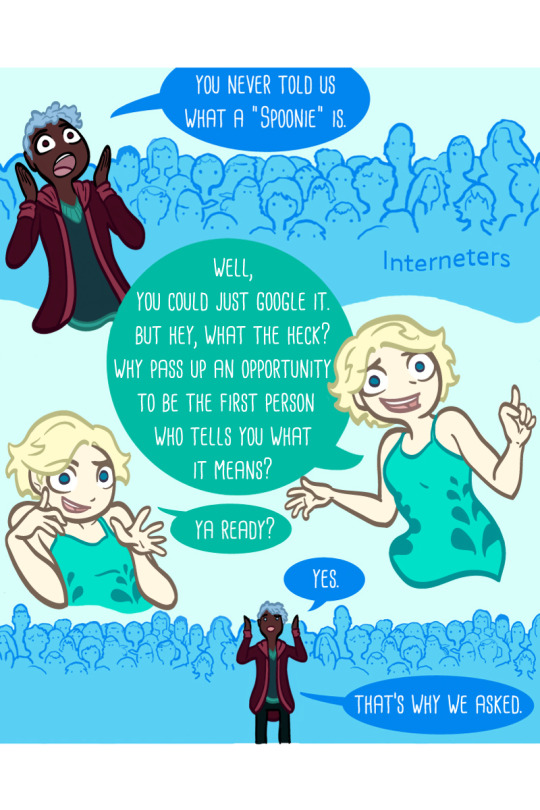
[Image 1 Description: A Crowd of people, all colored blue, with the label “Interneters” on them. To the left of the crowd a young man stands out. He is a repeat character. We’ll call him “The Interneter.” He has dark brown skin, short light blue dread-locks. He wears a burgundy colored hoodie, a dark teal V-neck shirt, and dark bluish-grey jeans.
The Interneter says “You never told us what a "Spoonie” is.“
To the middle right is Rachel, we can only see to the bottom of her shirt for now. (She has pale white skin, short and messy blonde hair, teal shirt with ferns printed on each side, Maroon shorts, light cyan thigh-high stocking with cut outs of leaves on them, maroon shoes).
Rachel, smiling wearily, looking right at us, holding her index finger up:”Well, you could just google it. But hey, what the heck? Why pass up an opportunity to be the first person who tells you what it means?“
We see Rachel again on the lower left side, smiling while raising an eyebrow, holding her left hand to her face, and her right hand out towards us: "Ya ready?”
The crowd lines the bottom of the image. The Interneter stands in the middle, with a speech bubble above “Yes.”and a speech bubble to his bottom right, “That’s why we asked.”]
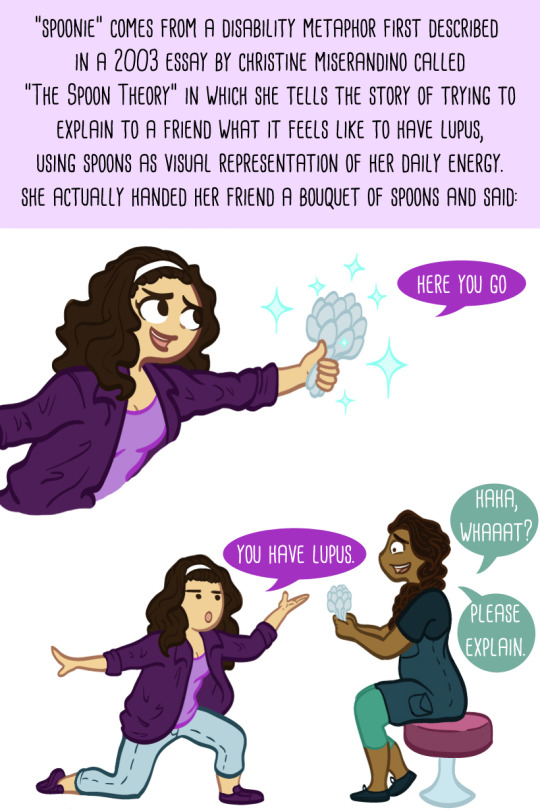
[Image 2 Description: There is a lavender square at the top of this image, on it is the text:
“Spoonie” comes from a disability metaphor first described in a 2003 essay by christine miserandino called “The Spoon Theory” in which she tells the story of trying to explain to a friend what it feels like to have lupus, using spoons as visual representation of her daily energy. She actually handed her friend a bouquet of spoons and said: “
Below Christine, a white woman with long brunette hair, a white headband, purple dress shirt and jeans, holds out a sparkling bouquet of spoons saying "Here you go”.
Below this we see her down on one knee. To her right her friend, female, brown skin, long braided dark brunette hair with a reddish tint, blue over-all dress, and teal leggings, sits on a stool holding the spoons Christine handed her.
“You have Lupus.” Christine says, to which her friend nervously responds “Haha, whaaat?…… Please explain.”]

[Image 3 Description:Another lander square fills the top of this image, on it is a quote from Christine's Essay,
“Most people start the day with unlimited amounts of possibilities- energy to do whatever they desire…for the most part, they do not need to worry about the effects of their actions…I wanted something for her to actually hold, for me to then take away. If I was in control of taking away the spoons, then she would know what it feels like to have something else being in control.”
Below Christine sits alone, her legs “criss-cross”. She is smiling at us and holds a giant spoon. Around her are little blurbs in purple text, “Might actually own a giant spoon” “Has done awesome advocacy work” “Read more at butyoudontlooksick.com (if you want to)”]
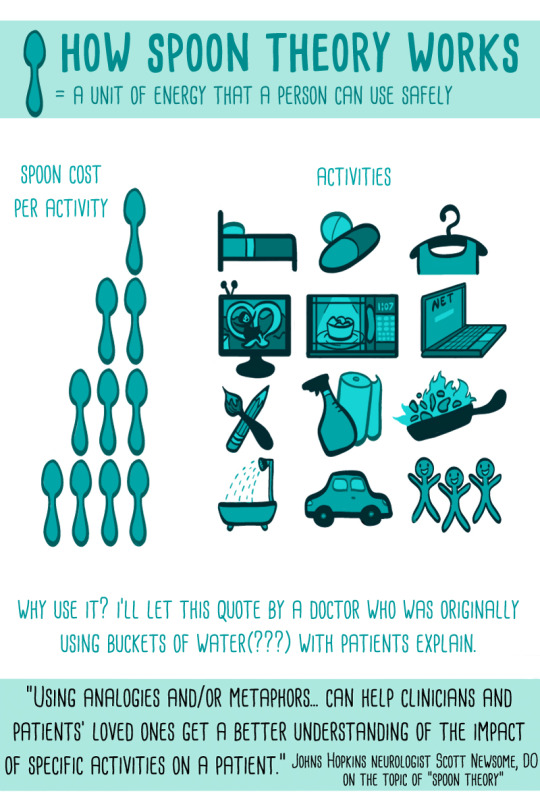
[Image 4 Description: a chart titled “How Spoon Theory Works”. A single spoon equals a unit of energy that a person can use safely. On the left is “spoon cost per activities” on the right is icons to show the activities.
1 spoon; Getting out of bed, taking medications, changing clothes. 2 spoons; Watching a tv show, a microwavable meal, using the internet.3 spoons; Enagaing in a small activity like art, cleaning something, making a meal that required stove or oven.4 spoons; Taking a shower, leaving your home, socializing.
Narration text: Why use it? I’ll let this quote by a doctor who was originally using buckets of water (???) with patients explain.
“Using analogies and/or metaphors…can help clinicians and patients’ loved ones get a better understanding of the impact of specific activities on a patient.” (John Hopkins Neurologist Scott Newsome, DO, on the topic of “Spoon Theory”)]
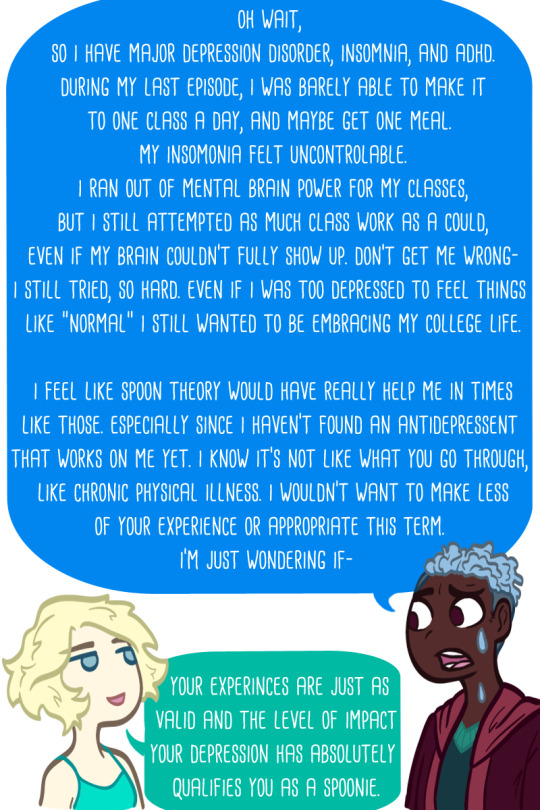
[Image 5 Description: The Interneter is looking worried, sweating. He says to Rachel,
“Oh wait, so I have major depression disorder, insomnia, and ADHD. During my last episode, I was barely able to make it to one class a day, and maybe get one meal. My insomnia felt uncontrollable. I ran out of mental brain power for my classes, but I still attempted as much class work as I could, even if my brain couldn’t fully show up. Don’t get me wrong- I still tried, so hard. Even if I was too depressed to feel things like ‘normal’ I still wanted to be embracing my college life. I feel like spoon theory would have really helped me in times like those. Especially since I haven’t found an antidepressant that works on me yet. I know it’s not like what you go through, like chronic physical illness. I wouldn’t want to make less of your experience or appropriate this term. I’m just wondering if-”
Rachel, looking calm, finding The Interneter endearing and smiling slightly, “Your experiences are just as valid and the level of impact your depression has absolutely qualifies you as a spoonie.”]

[Image 6 Description: Narration text “Today a spoonie is someone with a condition that causes limited amounts of physical and/or cognitive energy, such as chronic illness, mental illness, or disability. It’s also used by neurodivergents who deal with persistent energy limitations.”
Below sits 4 girls all smiling, waving, and looking at us, left to right; The first girl has an average frame, tan skin, long navy blue hair, a maroon hat, faded pink pants, a blue/purple/lavender striped shirt, and cutting scar on her arms. Second girl is Kitt, she was in another comic, she has a plus sized frame, dark brown skin, shoulder length curly/dark brown hair. she wears a teal dress with white strips, a waist long blue jacket, blue shoes, her left left is a purple prosthetic. Third girl, she is Asian, very light but still tan skin, with black hair in cut in a pixie style. She has on a white sweat shirt that has lavender sleeves and a salmon color at the bottom, in the center is the rainbow infinity sign for neurodivergence. She has on mint pants and wear white and salmon colored sneakers. On the floor below them sits Rachel.
Narrative text "Not all of us are literally measuring out energy in terms of spoons, but having such a metaphor is extremely helpful.“]
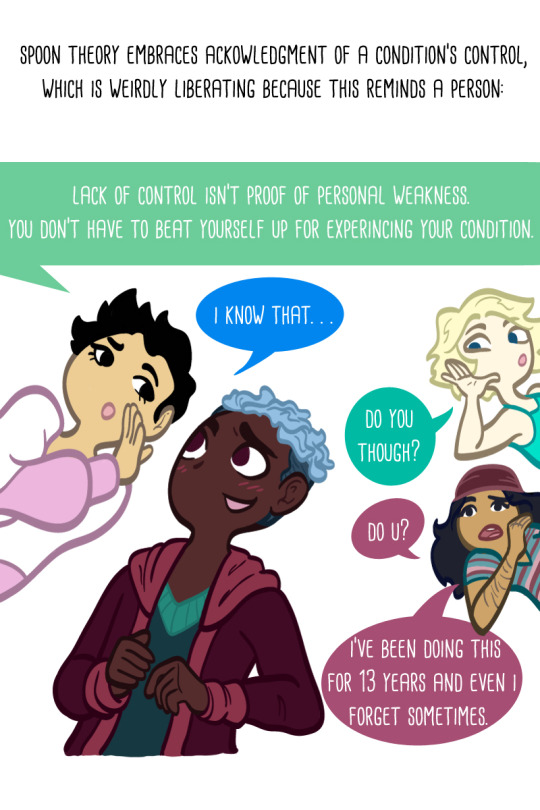
[Image 7 Description: Narrative text "Spoon Theory embraces acknowledgment of a condition’s control, which is weirdly liberating because this reminds a person:”
Girl number 3 is on the right is whispering to The Interneter “Lack of control isn’t proof of personal weakness. You don’t have to beat yourself up for experiencing your condition.”
“I know that…” the interneter says shyly, blushing and smiling.
“Do you though?” Rachel says from the left.
Below her is girl number one. “Do u? I’ve been doing this for 13 years and even I forget sometimes.”]

[Image 8 Description: Narrative text “For young people in particular, spoonie is the first word a person may use when starting to rewrite what their life with their condition could look like.”
The Interneter lays flat on his bed, we see him from the side looking hopeful “Having to live life this way isn’t easy, but I want to make it work.”
Below we see he is centered on his bed holding 1 spoon, “especially since I’m still having that episode of depression.” On the right side his words continue “I didn’t say anything because I was afraid of messing up the flow of the comic.”]

[Image 9 Description: Narrative text “Spoons can be a silly thing to associate with possibly not having enough energy to manage basic survival activities, which is one reason some don’t bother using the term at all. Still, it’s easier to say,”
A woman, standing in the center of the image with a long purple dress, short brunette hair, and a purple walking cane, holds a hand to her chest smiling “I’m a spoonie!”
To her left is a large man all in red, hand on his hips smiling, “My own experiences of feeling tired helps me empathize with you. You make me feel validated.”
To her right is a little girl colored pink “Spoons are good!”
Next to her is a woman in maroon “Such a cute and positive take!”
At the bottom of the image narrative text says “Rather than bring folk’s moods down with-”]

[Image 10 description: “My body is disabled! Living an existence with a condition that is unpredictable and invisible sometimes breaks my brain! Please don’t shut me out until I’m "Fixed”. Just respect my limits.“
Rachel says, now in the center of the people instead of the purple-dressed spoonie. She sits in her wheelchair with legs up, holding her arms out, her expression is crying yet smiling.
The large man to her left has his arms folded, now very uneasy "How do I tell apart your "disability” from excuses, self pity, and faking stuff? And who sits in a wheelchair like that?“
On the right the little pink girl is crying, her maroon mother bending down to hold her. "Isn’t "Disabled” bad?“ the girl ask.
Her mother responding ”Nothing we need to worry about, sweetie. There are plenty of programs that think of the disabled so we don’t have to.“
Narrative text, ”Yes. Spoonie can at times feel detached just enough from harsh reality to ease people’s discomforts.“]

[Image 11 Description: Narrative text:” Perhaps detached enough for misguided normies to think,”
A young woman standing in the center with one hand on her hip and one raised with her index finger pointed upwards says "Hey! I feel like I have limited energy to! I like this "spoons” idea. It will help me be mindful and proactive with my energy! I’m a spoonie now!“
She is white woman with tanned skin, long bleach blonde hair in a pony-tail, wearing grey yoga pants and a green tang top. On her tang top are the words "Has no condition is just human”.
To her left Girl number 3, Kitt, and Rachel are huddled looking at the woman.“Don’t-”says girl number 3. “Oh no, wait-” says Kitt. “You’re not one now, but hey, you’ll be one of us eventually. No need to rush.” says Rachel.
On the left is a young hipster male all in orange “You’re just a product of obsessive online health trends.” He calls out.
Narrative text “Let’s hope it doesn’t turn into the 'snuggie’ of disability lingo.]

[Image 12 description: Narrative Text: ”Now, being disabled by a condition, especially it’s fatigue aspect, doesn’t mix well with the 'hyper-productive’ narrative that today’s society puts out.“
A Pinkish-maroon leg with the words 'society that doesn’t fully realize the systemic harm of it’s ableism’ on it, kicks a stick figure of the Interneter high up into the air in a Team Rocket fashion.
”Looks like having problems with my human body is causing me to be considered less of a human agaaiinn!!!“ The interneter says, surrounded by anime sparkles.
Narrative Text ”Still, being active, productive, and accepted by some form of community, lay the foundations for self-confidence and a sense of worth. Contributing online is one way even the most debilitated amount us have managed a version of that foundation.“]
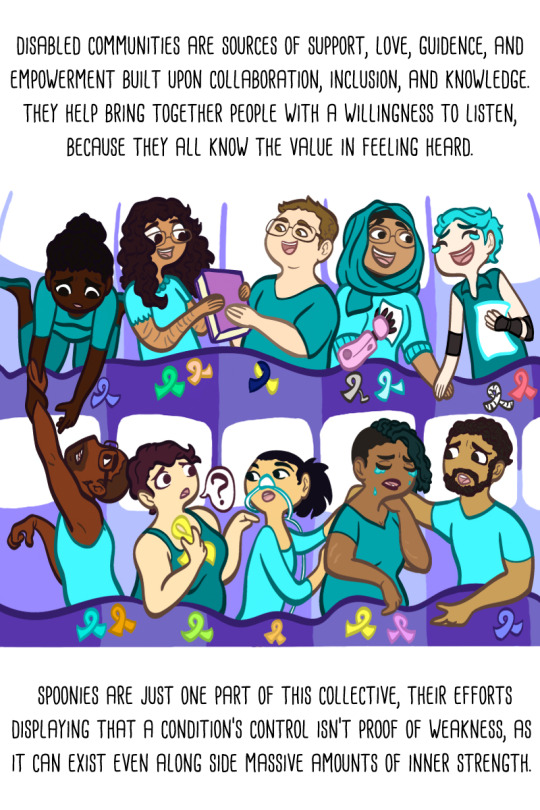
[Image 13 Description: Narrative text: ”Disabled communities are sources of support, love, guidance, and empowerment built upon collaboration, inclusion, and knowledge. They help bring together people with a willingness to listen, because they all know the value in feeling heard.“
Two horizontal rows of a diverse group of people with disabilities, drawn to show them all in bed, all interacting with each other like the would if the were together in person. Below each person is an awareness ribbon to indicate the condition(s)they have.
From left to right, top row; A young woman with very dark brown skin, black hair in a bun, is looking concerned and reaching for a young man in the row below her. He is black with slightly lighter skin, very short hair, a 5 o'clock shadow, wearing glasses. He is reach towards her with is left arm, his right arm is curled due to his medical condition.
Next in the top row, a Young woman with curly brown hair, tan skin, glasses, and cutting parts on her arms is smiling and being handed a book by a young white male with Downs-Syndrome, he hair short light brown hair and glasses.
A young woman with tan skin, glasses, wearing a hijab, has a pink prosthetic arm holding a piece of paper, and is using her other arm to hold hands with the person she is smiling/talking with- a thin non-binary with short blue pixie hair and braces on her elbows and right arm. This person is also holding a piece of paper, eyes shut from laughing, with happy tears coming from their eyes.
Bottom row; Next to the young man with dark skin, is a plus-sized woman with white skin, her hair is deep violet in a pixie cut. She is holding a yellow ribbon, looking concerned and speaking a ”?“ as she taps the should of the girl next to her. This girl is Asian with black hair in a short ponytail, she looks back at the woman with the ribbon, her arms are on the back of the next woman, whom she is comforting. This woman has medium dark skin, half her head is shaved, the other is short navy blue dreadlocks. She is curled up and crying, below her is a yellow ribbon next to a purple one. The young man on her left has his left arm around her, and has a sympathetic expression, talking with the woman to try and provide comforting. He has tan skin and short curly brown hair, with short curly brown facial hair.
Narrative text: ”Spoonies are just one part of this collective, their efforts displaying that a condition’s control isn’t proof of weakness, as if can exist even along side massive amounts of inner strength.“]
By Evan Stewart on January 3, 2018

Photo Credit: Meagan Fisher, Flickr CC
2017 was a big year for conversations about representation in popular media—what it means to tell stories that speak to people across race, gender, sexuality, ability, and more. Between the hitsandthe misses, there is clearly much more work to do. Representation is not just about who shows up on screen, but also about what kinds of stories get told and who gets to make them happen.
For example, many people are now familiar with “The Bechdel Test” as a pithy shortcut to check for women’s representation in movies. Now, proposals for a new Bechdel Test cover everything from the gender composition of a film’s crew to specific plot points.
These conversations are especially important for the stories we make for kids, because children pick up many assumptions about genderandrace at a very young age. Now, new research published in Sociological Forum helps us better understand what kinds of stories we are telling when we seek out a diverse range of children’s books.
Krista Maywalt Aronson, Brenna D. Callahan, and Anne Sibley O’Brien wanted to look at the most common themes in children’s stories with characters from underrepresented racial and cultural groups. Using a special collection of picture books for grades K-3 from the Ladd Library at Bates College, the authors gathered a data set of 1,037 books published between 2008 and 2015 (see their full database here). They coded themes from the books to see which story arcs occurred most often, and what groups of characters were most represented in each theme.
The most common theme, occurring in 38% of these books, was what they called “beautiful life”—positive depictions of the everyday lives of the characters. Next up was the “every child” theme in which main characters came from different racial or ethnic backgrounds, but those backgrounds were not central to the plot. Along with biographies and folklore, these themes occurred more often than stories of oppression or cross-cultural interaction.
These themes tackle a specific kind of representation: putting characters from different racial and ethnic groups at the center of the story. This is a great start, but it also means that these books are more likely to display diversity, rather than showing it in action. For example, the authors write:
Latinx characters were overwhelmingly found in culturally particular books. This sets Latinx people apart as defined by a language and a culture distinct from mainstream America, and sometimes by connection to home countries.
They also note that the majority of these books are still created by white authors and illustrators, showing that there’s even more work to do behind the scenes. Representation matters, and this research shows us how more inclusive popular media can start young!
Evan Stewart is a Ph.D. candidate in sociology at the University of Minnesota. You can follow him on Twitter.
Hey Retailers!Since#WeNeedDiverseBooks, here’s a deal on La Raza Anthology just for you!

Pledge Here! >>http://kck.st/2bV82rU<<
We’re happy to announce that we’re up to $5,000!!! Because we reached our first reward goal, we’re adding the Matador design by Carmen Pizarro to our Postcard Pack!!!

Actvision Blizzard decides to “improve” diversity in their games by quantifying things like ethnicity, culture and sexual orientation.
Just another, sadly unsurprising step in Blizzard’s long, long journey of promising a more diverse respesentation followed by more sexism and tokenism every time.

If you don’t see what’s wrong with that picture, please stop to ask youself how you’d represent something like ethnicity or gender on a numeric scale. And what would 0 on that scale be.
Thankfully, most of the fandom and media seems to react to this idea with well-deserved bewilderment and mockery (like comparisons to phrenology, a racist pseudoscience). Also with obligatory mentions of how this does the opposite of improving the company’s image in the light of their bigoted, toxic work culture and corrupt business practices.
Moreover, despite now edited-out claims in the official announcement about the diversity tool, Overwatch 2 developers deny using it or even knowing about it prior to the media buzz.
If we could put a number on how out of touch this is, ActiBlizz PR would score off their little dystopian charts!
But hey, it’s not like we’ve been pointing out for years that Blizz seems to do diversity by begrudgingly ticking off boxes on a list of superficial character features (and only after ticking some boxes multiple times),right?
~Ozzie
Media reporting on the matter:
- Activision Inexplicably Introduces Tool to Rate Character Diversity Metrics - FanByte
- Activision Blizzard Discusses Tool to Calculate Diversity in Video Game Characters, May Also Be Investing in Lab Coats - The Mary Sue
- Activision Blizzard’s New Diversity Game Tool Comes Across Terribly&Activision Blizzard’s Diversity Tool Has A Long, Even More Embarrassing History -Kotaku
- Activision’s “Diversity Tool” Is F*cking Awful - The Jimquisition (video)
When I found out one of the new OC curlers was #Norwegian I knew the fancy pantalones had to come out for just a little bit, but I learned my lesson from the Germany pants on Saturday league so I only put on the pants afterwards lol. Rich is married to Gina - one of the Asian women skips during the first week. I hope Gina skips more games. I’m all about #diversity #inclusion #representation & getting more Asian women to embrace skipping.
.
.
What Josh Sutor referred to after Saturday’s game as “German luck” struck again. My superstitious side would say maybe I need a different Germany jacket and we need to keep playing yellow stones; Andrew, my Oskar, thinks it’s all about NOT having hammer & rushing the other team He even bled today & the ritualistic sacrifice didn’t work Hopefully bringing in a ringer sub (Clyde) for the 6/2 game will bring on the W. As much as I want him to sweep all my stones, maybe he should call line& Andrew can sweep - he’s used to it lol.
.
.
Bill, who taught the skips clinic before league, was totally shocked I was wearing a combo of Norway & Germany tonight. He was already like “WHOA WHAT’S GOING ON HERE?!?” when he saw me w/ GERMANY on my chest, I unzipped my jacket to reveal the Norway jersey underneath. He’s used to seeing me all decked out in blue & yellow. I still had the bracelets & earrings, but I’ve been cheering on Germany at World Juniors so gotta represent - Ate loves her Adings & totally believe they can win it all.
.
.
#PinayCurler #FilipinoCurler #curlingfangirl #fangirlcurling #ilovecurling #CurlingPilipinas #letsmakegranitefly #curling #sports #wintersports #growththegame #growthesport #sweep #occurling #curlingrocks #hurryhard #definitelynotswedish #HardlineNation #itsalotharderthanitlooks #isweptwithyourwife #skipscansweep #fireballers #irvine #broomstacking #ChangeTheFaceOfCurling
https://www.instagram.com/p/CdxgyL6ruLr/?igshid=NGJjMDIxMWI=
Post link

